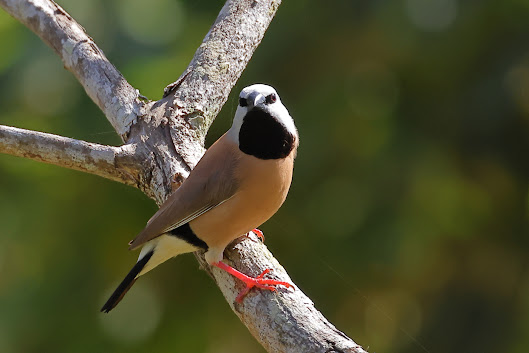
Horsfield's Bronze-Cuckoos (Chalcites basalis) spend more time on the ground than other cuckoos. (Yet are often seen in the open at the top of trees, after being first heard issuing their slightly melancholy whistling call.) They also appear more often than other cuckoos to take over care of their own young. After the parasitised parents have done the early hard work!

Here's junior today, with, I think, an Orange Dart (several similar species). The parent bird was taking caterpillars from the grass - and not doing much sharing. So I don't know if the butterfly was natural prey or just unlucky collateral damage as the juvenile learned the ropes.

Also popping up on the ground, a pair of Bush Thick-knees (Burhinus grallarius). Thick-knees??? Well, as I've just found, the accepted name guide for Australian birds, Chrisitidis & Boles 2008, drops Stone-Curlew in favour of Thick-knee. First time I've noticed the change. Not sure many birders use it. And, as you may see, the knees aren't that thick!




Great images, Tony, especially the Cuckoo with the Orange Dart in its beak.
ReplyDeleteI am a "Stone Curlew" person, myself.
The relate Beach SC does have very heavy legs and knees.
Your SCs pair is lovely.
Cheers
Denis
Great photos of the Cuckoo - which I have heard but still not seen. Oh well, one day! What has happened with the name for the Beach S-C? Is that now Thick Knees also?
ReplyDeleteThanks Denis.
ReplyDeleteHi Mick: Yep. Beach also goes the Thick-knees way. Reminds me to get out to Taylors Beach next week for early morn low tide and see what's on the sands.